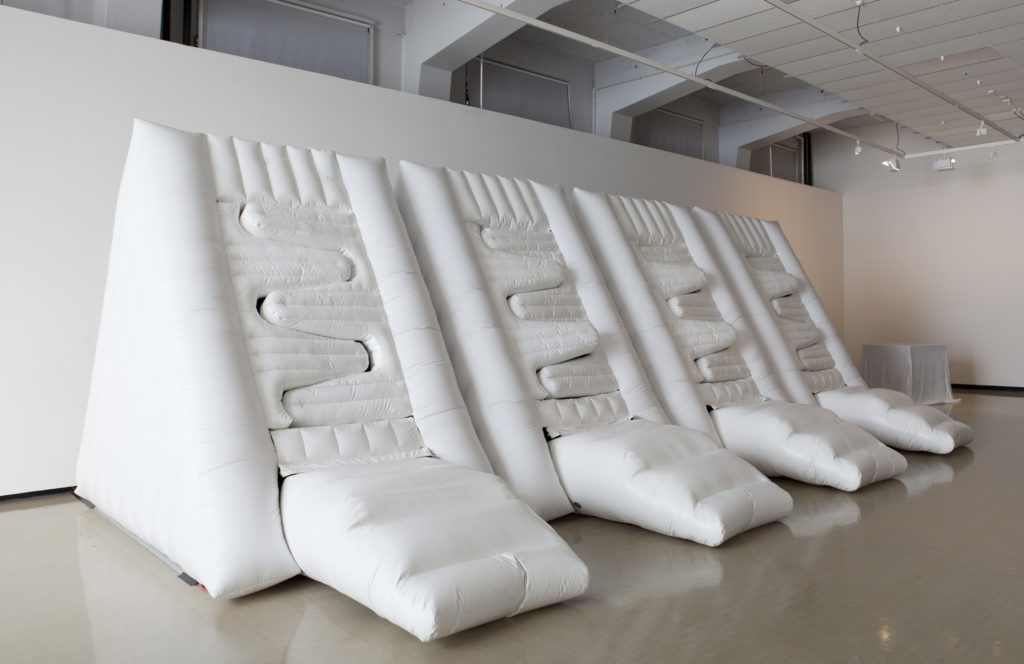ARTISTS Bekah Carran, Eddie Clemens, Paul Cullen, Bill Culbert and Ralph Hotere, David Cross, Don Driver, Scott Eady, Alicia Frankovich, Trent Garratt and Clinton Watkins, Regan Gentry, Brett Graham, Glen Hayward, Sam Harrison, Bronwyn Holloway-Smith, Yuk King Tan, Maddie Leach, Alex MacKinnon, Raewyn Martyn, Paul Maseyk, Shane McGrath, Ben Pearce, Ruth Thomas-Edmond, Francis Upritchard, Lisa Walker, Rohan Wealleans, Wayne Youle, Seung Yul Oh. CURATORS Aaron Lister, Abby Cunnane PARTNERS Wellington Sculpture Trust, Wellington City Council SPONSOR Ernst and Young
Over the last few decades sculpture has pushed into an ever expanding field of activity, endlessly challenging and redefining its own boundaries. Sculpture has keenly embraced site-specific, relational, and installation practices that often spurn the object as tradition-bound and irrelevant. Yet, recently, there has been a concerted effort to retreat back into the medium, to reclaim lost territories, processes, and qualities—although always in newly engaged or augmented form.
The Obstinate Object is an exhibition of recent New Zealand sculpture orientated around ‘object-ness’. Its artists do not offer a simple or celebratory return to the traditional sculptural object, a conservative clamouring back to the top of the pedestal or to the foundry. Rather, they use contemporary modes and materials to rewrite the formal languages of sculpture, to reconsider the histories and relationship to audience bound up with the sculptural object. This all takes place in a culture of recycling, digitisation, and downloads, where the role of objects is questioned as never before.
This exhibition tracks some of the diverse ways that object-ness has materialised in contemporary sculpture, often in twisted forms that turn against or interrogate the medium. Rather than attempt to pin down what an object-based sculptural practice might be, the exhibition asks what can it do, calling together various approaches and actions.
Don Driver’s Ritual (1982)—a maniacal, procession-like assemblage of hybrid human/doll/goat figures—is the oldest work in the exhibition. This makeshift altar is presented as a harbinger of this contemporary sculptural mode. It sits between Eddie Clemens’s glowing fences woven from electrical wire and conduit piping lifted from Terminator II, and Bekah Carran’s preternatural rock and crystal memorial to contemporary eco-anxieties. Ritual’s rhythmic drumbeat is one of many works that explore the sculptural potential of sound. Alex MacKinnon’s atonal soundscape is created by an accumulated mass of salvaged speakers, speaker wire, and audio equipment. The sound of a sculpture being made and unmade, materialising and dematerialising, is performed by Clinton Watkins and Trenton Garratt across two sites via radio transmission.
The exhibition regularly pushes sculpture outside of itself and outside of the gallery. Regan Gentry’s sculptural rendition of a Colin McCahon waterfall painting spurts out of a second floor window into a pool below. Raewyn Martyn’s folding stools as mobile sculptures can be checked out from the front desk and used throughout the gallery, or taken into the outside world. The exhibition has left a permanent trace on the city with Shane McGrath’s helter-skelter ride/Tatlin memorial inspired public sculpture in Glover Park.
Glen Hayward, Seung Yul Oh, and Scott Eady play on sculpture’s ability to deceive and prank, while Brett Graham co-opts its monumental form for more politicised purposes—to protest the claims around ownership and management of the Maungatautari Reserve. Lisa Walker’s absurdly oversized broach made for the gallery exemplifies two other threads of the exhibition: the entanglement of sculpture with other media (ceramics, jewellery, video, performance, sound, painting) and its potential to intervene within space and architecture to disrupt normal experience. Such interventions by Sian Torrington, Glen Hayward, and Ruth Thomas-Edmond point to the Gallery as the most obstinate object of them all.




























































































































